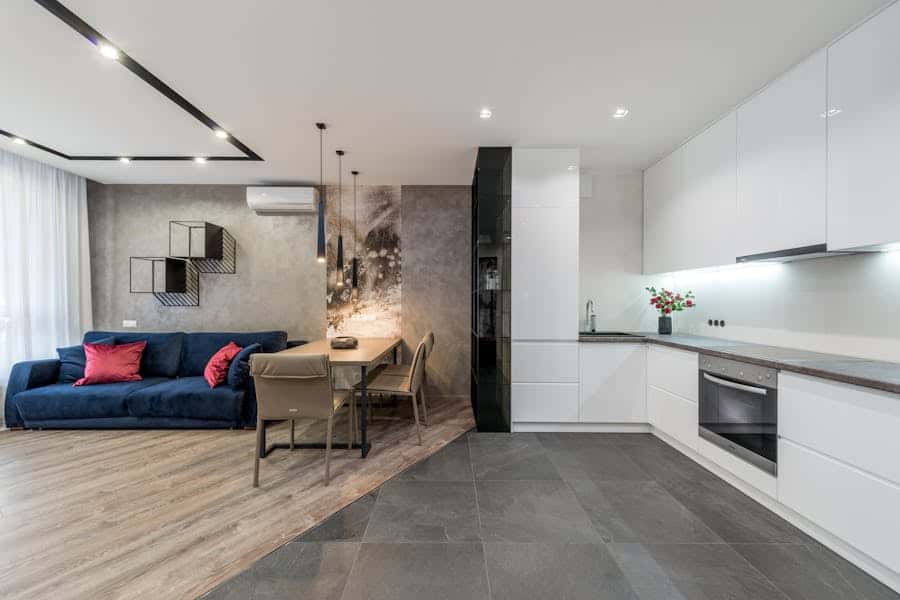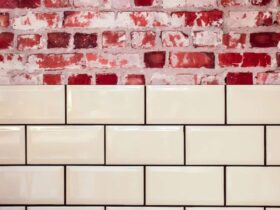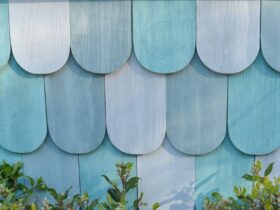To seal slate floors, apply a slate sealer evenly over the entire surface that you want to seal and buff it in with a clean cloth. Sealing slate floors is essential to protect them from water damage, staining, and scratching.
Like most other natural stones, slate tile flooring requires sealing, and it is recommended to do so on a yearly basis. Using a quality sealer will improve the appearance of your slate floors and make them easier to maintain. We will discuss the best methods for sealing slate floors and how to choose the right sealer for your specific needs.
We will also answer some commonly asked questions about sealing slate floors, so read on to learn more.
Choosing The Right Sealer
Glaze ‘N Seal Slate Sealer is highly recommended as it protects against all organic stains like cooking oil and beverages. It enhances the appearance of slate, flagstone, and quarry tile.
For sealing slate floors, apply Floorseal Slate Sealer using a flat microfibre mop or by hand with a microfibre cloth. It’s best to apply at least two thin coats, about an hour apart, for optimal results.

Credit: www.simplyfloorcleaning.co.uk
Preparation
Preparation is a crucial step before sealing slate floors. Proper preparation ensures that the sealer can effectively protect and enhance the natural beauty of the slate, extending its lifespan. The preparation process involves cleaning the slate floors and ensuring they are thoroughly dried before applying the sealer.
Cleaning The Slate Floors
Before sealing, it’s essential to clean the slate floors thoroughly. Use a mild detergent or a specially formulated stone cleaner to remove any dirt, dust, or grime from the surface. Scrubbing gently with a soft-bristled brush can help to lift any embedded dirt and stains from the slate. Rinse the floors with clean water to ensure all cleaning residues are removed.
Ensuring Proper Drying
Once the slate floors are cleaned, it’s important to ensure they are completely dry before applying the sealer. Allow the floors to air dry for at least 24 hours to ensure all moisture evaporates from the surface. Using fans or dehumidifiers can expedite the drying process, especially in humid environments. Proper drying is essential to ensure the sealer bonds effectively with the slate, providing long-lasting protection.
Sealing Process
Sealing slate floors is crucial for maintaining their durability and enhancing their appearance. The sealing process involves applying a protective sealer to the surface of the slate tiles, creating a barrier against stains and moisture. Here’s a step-by-step guide to sealing slate floors effectively.
Step 1: Applying The Sealer
Before starting the sealing process, ensure that the slate floor is clean and dry. Choose a high-quality sealer suitable for slate floors. Apply the sealer evenly over the entire surface using a clean applicator brush or roller. Work in small sections to ensure thorough coverage. Allow the sealer to penetrate the slate surface for the recommended time as per the manufacturer’s instructions.
Step 2: Buffing The Sealer
Once the sealer has penetrated the slate tiles, buff the sealer using a clean, dry cloth or buffing pad. This step helps to remove any excess sealer and ensures an even finish. Buff the entire floor in a circular motion until the surface feels smooth and dry to the touch. Proper buffing is essential for achieving a uniform and attractive look.
Maintenance
To seal slate floors, start by cleaning the surface thoroughly, then apply the sealer evenly with a cloth or flat microfiber mop. Allow at least two thin coats to dry for optimal protection against stains and scratches, and maintain the floor’s appearance with yearly reapplication. Glaze ‘N Seal Slate Sealer is recommended for long-lasting results.
Frequency Of Sealing
Seal slate floors annually to maintain water repellency and prevent staining.
Cleaning And Upkeep
Regularly sweep or vacuum to remove debris, mop with mild soap and water, and avoid harsh chemicals.
For deeper cleaning, use a pH-neutral cleaner and avoid acidic or abrasive products.
Reapply sealer every year to ensure the longevity and protection of your slate floors.
Frequently Asked Questions
Does Slate Flooring Need To Be Sealed?
Yes, slate flooring needs to be sealed to prevent water damage, staining, and scratching. Sealing should be applied annually.
What Is The Best Sealer For Slate Floor?
Glaze ‘N Seal Slate Sealer is the best sealer for slate floor. It protects against all organic stains, is easy to apply and maintain, and can be used both indoors and outdoors. Apply a minimum of two thin coats using a flat microfiber mop or by hand with a microfiber cloth.
Sealing slate flooring aids in water repellency and prevents staining and scratching. It should be applied on a yearly basis.
How Do You Seal An Old Slate Floor?
To seal an old slate floor, apply Floorseal Slate Sealer with a microfibre cloth, using two thin coats an hour apart. Add more coats if needed for protection.
Does Sealing Slate Make It Shiny?
Sealing slate can make it shiny by using an enhancing sealer to add shine and maintain its wet look. Solvent-based enhancers are recommended for easier application and better absorption into the stone.
Why Should You Seal Slate Floors?
Sealing slate floors helps prevent stains and water damage, prolonging their lifespan and maintaining their appearance.
How Often Should You Seal Slate Floors?
It is recommended to seal slate floors annually to ensure they remain protected from stains and moisture.
Conclusion
Sealing slate floors is essential for protection against stains and water damage. Choosing the right sealer like Glaze ‘N Seal Slate Sealer can enhance the appearance and durability of your slate tiles. Regular maintenance with proper application techniques ensures long-lasting results for your slate flooring.








Leave a Reply